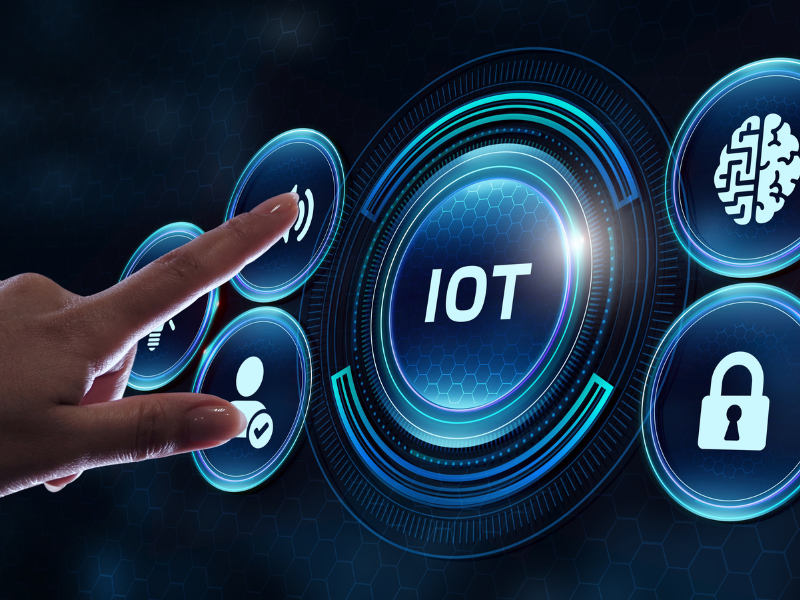Introduction
The Industrial Internet of Things (IoT) refers to the integration of digital and physical systems in industrial sectors to improve efficiency, productivity, and safety. Industrial IoT involves the use of sensors, connectivity, data analytics, and cloud computing to collect and analyze data from various industrial processes, enabling automation, optimization, and predictive maintenance. This article explores the concept of Industrial IoT and its applications in various industries, highlighting the benefits, key components, challenges, and future trends.
What is Industrial IoT and its applications in various industries?
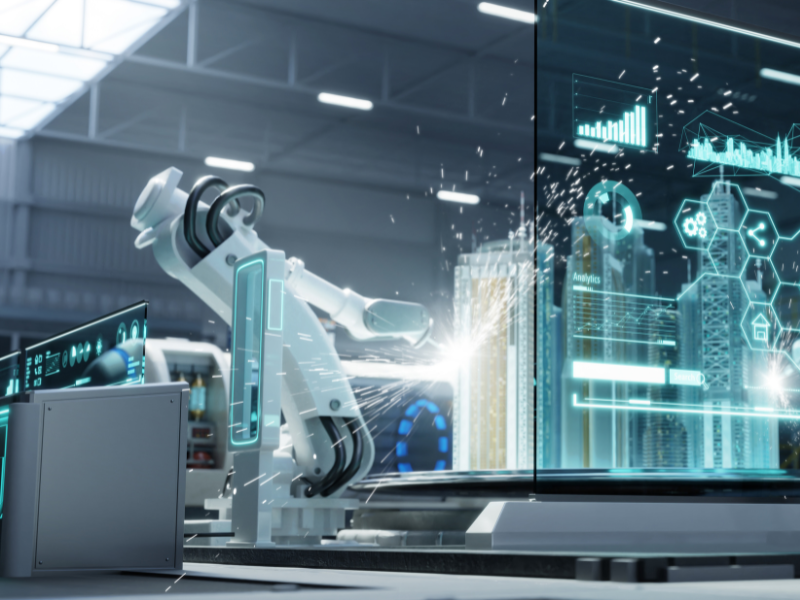
Industrial IoT refers to the network of interconnected devices, machines, and systems that collect and exchange data for monitoring, control, and optimization of industrial processes. It involves the use of sensors, actuators, and communication technologies to gather data from physical assets and transmit it to a centralized system for analysis. The insights gained from this analysis can be used to improve operational efficiency, reduce downtime, enhance product quality, and enable real-time decision-making.
Industrial IoT finds application in various industries, including manufacturing, energy, transportation, agriculture, healthcare, retail, and smart cities. In manufacturing, Industrial IoT enables smart factories with automated processes, predictive maintenance, and real-time monitoring of production lines. In the energy sector, it facilitates smart grids for efficient energy distribution and management. In transportation, Industrial IoT enables connected vehicles, logistics optimization, and fleet management.
In agriculture, it enables precision farming, monitoring of crop conditions, and efficient resource utilization. In healthcare, it enables remote patient monitoring, real-time health tracking, and personalized care. In retail, it facilitates inventory management, supply chain optimization, and personalized customer experiences. In smart cities, Industrial IoT enables efficient infrastructure management, energy conservation, and improved citizen services.
Benefits of Industrial IoT and its applications
Industrial IoT offers numerous benefits in terms of increased efficiency, cost reduction, improved safety, and enhanced decision-making. By connecting and collecting data from various industrial assets, Industrial IoT enables real-time monitoring and control of processes, leading to improved overall efficiency. It enables predictive maintenance by monitoring equipment conditions and detecting anomalies, thereby reducing downtime and maintenance costs. Additionally, Industrial IoT enhances safety by providing real-time alerts and notifications for potential hazards.
With Industrial IoT, businesses can gain valuable insights from the collected data through advanced analytics. These insights help in identifying trends, optimizing operations, and making informed decisions. Industrial IoT also enables remote monitoring and control of industrial processes, allowing for efficient resource utilization and reducing the need for manual intervention. Overall, the benefits of Industrial IoT include increased productivity, reduced costs, improved safety, and enhanced decision-making capabilities.
Key Components of Industrial IoT Systems
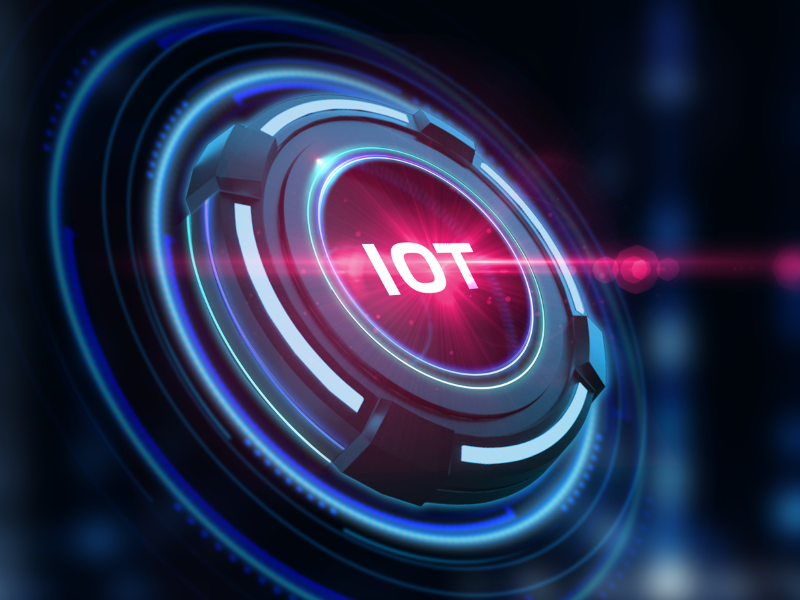
Industrial IoT systems comprise several key components that work together to collect, transmit, analyze, and act upon data. These components include:
Sensors and Devices
Sensors and devices are the foundation of Industrial IoT systems. They are responsible for capturing data from various industrial assets, such as machines, equipment, and infrastructure. These sensors can measure parameters like temperature, pressure, vibration, humidity, and more. The collected data is then transmitted to the central system for analysis and action.
Connectivity
Connectivity is essential for transferring data from sensors and devices to the centralized system for analysis. Industrial IoT systems utilize various wireless and wired communication technologies, such as Wi-Fi, Bluetooth, cellular networks, and wired Ethernet. These communication channels ensure seamless and reliable data transmission.
Data Analytics
Data analytics plays a crucial role in Industrial IoT systems. The collected data is analyzed using advanced analytics techniques, including machine learning, artificial intelligence, and big data analytics. The analytics algorithms extract valuable insights from the data, enabling businesses to make data-driven decisions, optimize processes, and predict future outcomes.
Cloud Computing
Cloud computing provides a scalable and flexible infrastructure for storing, processing, and analyzing large volumes of industrial data. It allows businesses to leverage cloud-based platforms and services for real-time data analysis, remote monitoring, and data storage. Cloud computing also enables easy integration with other enterprise systems and scalability to handle increasing data volumes.
Security
Security is a critical component of Industrial IoT systems. As industrial processes become increasingly connected, the risk of cyber threats and data breaches also rises. Industrial IoT systems incorporate various security measures, including encryption, access control, authentication, and intrusion detection systems, to protect data and ensure the integrity and confidentiality of industrial operations.
Industrial IoT Applications in the Manufacturing Industry
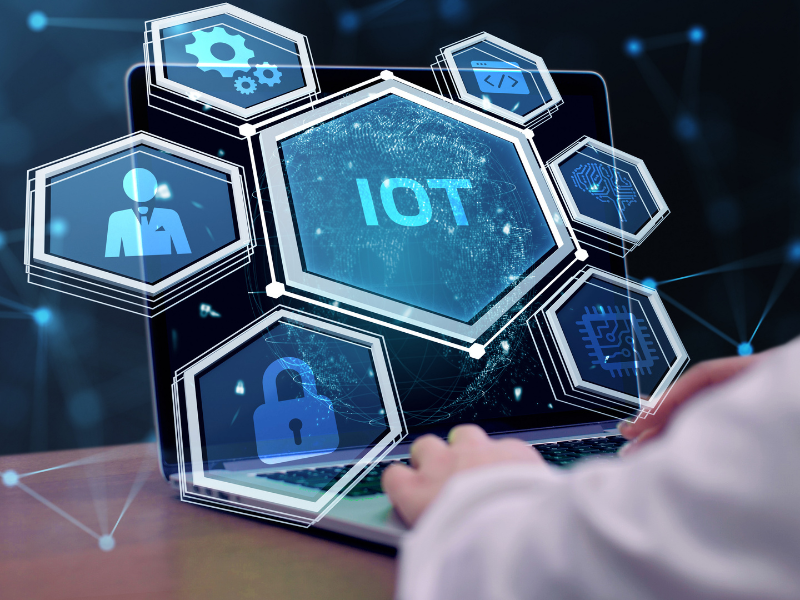
In the manufacturing industry, Industrial IoT is revolutionizing traditional manufacturing processes and enabling the development of smart factories. Industrial IoT enables real-time monitoring of production lines, capturing data on machine performance, energy consumption, and product quality. This data can be used to optimize production processes, reduce downtime, and improve overall efficiency. Industrial IoT also enables predictive maintenance by monitoring equipment conditions and predicting failures before they occur. This reduces unplanned downtime and maintenance costs.
The use of Industrial IoT in manufacturing also enables remote monitoring and control of production processes, allowing for better resource utilization and reduced operational costs. It facilitates the integration of supply chains, enabling real-time visibility of inventory levels, order status, and logistics optimization. Industrial IoT also enhances worker safety by detecting and alerting potential hazards in real-time.
Industrial IoT Applications in Energy Industry
Industrial IoT is transforming the energy industry by enabling the development of smart grids and efficient energy management systems. With Industrial IoT, energy companies can monitor and control energy generation, distribution, and consumption in real-time. This enables them to optimize energy usage, reduce wastage, and improve overall energy efficiency.
Industrial IoT enables the integration of renewable energy sources, such as solar and wind, into the grid, enabling efficient energy generation and distribution. It also allows for real-time monitoring of energy infrastructure, detecting faults and potential failures before they lead to disruptions. Industrial IoT enables demand response programs, where energy consumers can adjust their usage based on real-time pricing and demand patterns.
Industrial IoT Applications in Transportation Industry
Industrial IoT is revolutionizing the transportation industry by enabling connected vehicles, logistics optimization, and efficient fleet management. With Industrial IoT, vehicles can be equipped with sensors and connectivity, enabling real-time monitoring of vehicle conditions, performance, and location. This data can be used to optimize routes, reduce fuel consumption, and ensure timely delivery.
Industrial IoT also enables predictive maintenance for vehicles, detecting potential issues before they lead to breakdowns. This reduces downtime and maintenance costs. Industrial IoT enables efficient fleet management by monitoring vehicle usage, optimizing routing and scheduling, and improving overall operational efficiency.
Industrial IoT Applications in Agriculture Industry
In the agriculture industry, Industrial IoT is driving the concept of precision farming, where farmers can monitor and control various farming activities in real-time. Industrial IoT enables the monitoring of soil conditions, weather patterns, crop health, and water usage. This data can be analyzed to optimize irrigation, fertilization, and other farming practices, leading to increased crop yield and reduced resource wastage.
Industrial IoT also enables the integration of drones and autonomous vehicles for precision agriculture. Drones equipped with sensors can capture aerial imagery and collect data on crop conditions, helping farmers make informed decisions. Industrial IoT facilitates smart irrigation systems that adjust water usage based on real-time crop needs, reducing water wastage.
Industrial IoT Applications in Healthcare Industry
In the healthcare industry, Industrial IoT is revolutionizing patient care and enabling remote monitoring and personalized health tracking. Industrial IoT enables the development of wearable devices and sensors that can measure vital signs, such as heart rate, blood pressure, and oxygen levels, in real-time. This data can be transmitted to healthcare providers for continuous monitoring and early detection of potential health issues.
Industrial IoT enables the integration of medical devices and electronic health records, facilitating real-time data exchange and decision-making. It also enables the development of telemedicine platforms, where patients can consult with healthcare professionals remotely. Industrial IoT enhances personalized care by enabling the collection and analysis of individual health data, leading to tailored treatment plans and preventive interventions.
Industrial IoT Applications in Retail Industry
In the retail industry, Industrial IoT is transforming traditional brick-and-mortar stores into smart retail environments. Industrial IoT enables real-time inventory management by monitoring stock levels, tracking product movements, and predicting demand patterns. This helps retailers optimize their inventory, reduce stockouts, and improve overall supply chain efficiency.
Industrial IoT also enables personalized customer experiences by capturing data on customer preferences, shopping behavior, and demographics. This data can be used to deliver targeted promotions, recommendations, and personalized customer service. Industrial IoT facilitates contactless payments, automated checkout, and self-service kiosks, enhancing the efficiency and convenience of the shopping experience.
Industrial IoT Applications in Smart Cities
Industrial IoT plays a significant role in the development of smart cities by enabling efficient infrastructure management and improved citizen services. Industrial IoT enables the monitoring and control of various city systems, such as traffic management, public transportation, waste management, and energy distribution.
Industrial IoT enables real-time monitoring of traffic conditions, allowing for efficient traffic flow and congestion management. It enables smart parking systems that guide drivers to available parking spaces, reducing traffic congestion and pollution. Industrial IoT facilitates intelligent waste management systems, optimizing waste collection routes based on real-time fill level data.
Challenges and Risks of Industrial IoT
While Industrial IoT offers numerous benefits, it also poses several challenges and risks. One of the significant challenges is the integration of legacy systems with new Industrial IoT technologies. Many industries have existing infrastructure that may not be compatible with Industrial IoT requirements. Upgrading and integrating these systems can be complex and costly.
Another challenge is the volume and complexity of data generated by Industrial IoT systems. Managing and analyzing huge volumes of data require advanced analytics capabilities and scalable infrastructure. Privacy and security are also significant concerns in Industrial IoT. With the increasing connectivity and data sharing, the risk of cyber threats and data breaches rises. Industrial IoT systems need robust security measures to protect data integrity and ensure privacy.
How to overcome challenges and mitigate risks in Industrial IoT
To overcome the challenges and mitigate risks in Industrial IoT, organizations can adopt several strategies. It is crucial to assess existing infrastructure and develop a roadmap for integrating Industrial IoT technologies. This may involve upgrading legacy systems, implementing new communication protocols, and ensuring compatibility across different devices and networks.
Data management and analytics capabilities are critical for deriving value from Industrial IoT. Organizations should invest in scalable infrastructure and advanced analytics platforms to handle the volume and complexity of data. It is also essential to implement robust security measures, including encryption, authentication, and access control, to protect sensitive data and prevent cyber threats.
Standardization and interoperability are vital in Industrial IoT. Organizations should embrace industry standards and protocols to ensure compatibility and seamless integration across different devices and systems. Collaboration with industry partners, technology providers, and regulators can also help address challenges and drive innovation in Industrial IoT.
Future Trends and Innovations in Industrial IoT
The future of Industrial IoT is marked by continuous innovation and technological advancements. Some of the key trends and innovations in Industrial IoT include:
- Edge computing: Edge computing is gaining popularity in Industrial IoT as it enables real-time data processing and analysis at the edge of the network. This reduces latency and bandwidth requirements and enables faster decision-making.
- Artificial intelligence and machine learning: AI and ML are being integrated into Industrial IoT systems to enable autonomous decision-making and predictive analytics. AI algorithms can analyze vast volumes of data and identify patterns and anomalies for improved operational efficiency and proactive maintenance.
- 5G connectivity: The rollout of 5G networks will significantly enhance Industrial IoT capabilities by providing high-speed, low-latency, and reliable connectivity. 5G networks will enable real-time monitoring, control, and data exchange in Industrial IoT applications.
- Digital twins: Digital twins are virtual replicas of physical assets or systems. They enable simulation, analysis, and optimization of industrial processes and assets. Digital twins can be used for predictive maintenance, virtual testing, and optimization of manufacturing processes.
- Robotics and automation: Industrial IoT enables the integration of robotics and automation in manufacturing and industrial processes. Collaborative robots and autonomous systems can work alongside humans, improving productivity, and safety.
FAQs
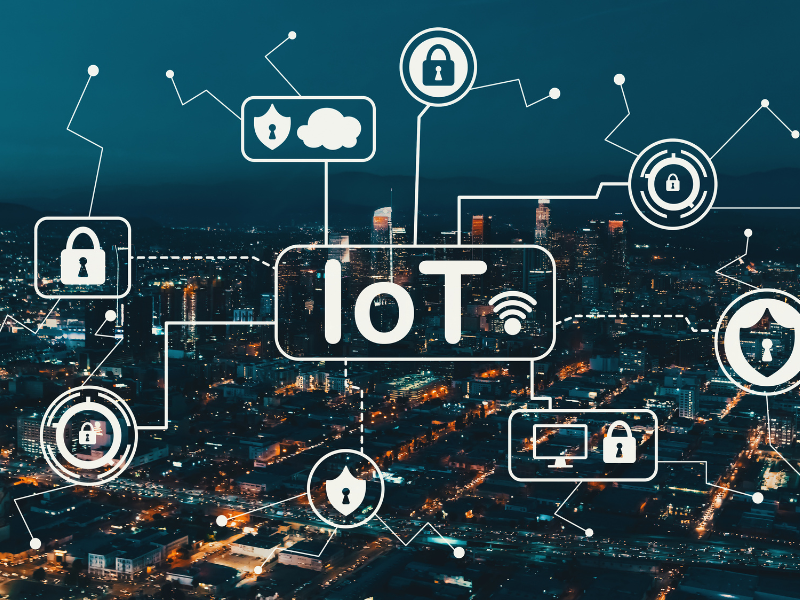
Q: How does Industrial IoT improve efficiency in manufacturing processes?
A: With Industrial IoT, manufacturers can monitor and control production processes in real-time, enabling optimization, predictive maintenance, and automation. This leads to increased efficiency, reduced downtime, and improved overall productivity.
Q: What is the role of Industrial IoT in predictive maintenance?
A: Industrial IoT enables predictive maintenance by monitoring equipment conditions and detecting anomalies. By analyzing data from sensors and devices, Industrial IoT systems can predict potential failures and schedule maintenance activities before breakdowns occur.
Q: How does Industrial IoT enhance supply chain management?
A: Industrial IoT enables real-time visibility of inventory levels, order status, and logistics optimization. This improves supply chain efficiency, reduces stockouts, and enables proactive demand planning and inventory management.
Q: What are the security concerns in Industrial IoT?
A: Industrial IoT poses security challenges such as data breaches, cyber threats, and unauthorized access. Organizations need to implement robust security measures, including encryption, authentication, and intrusion detection systems, to protect data and ensure the integrity and confidentiality of industrial operations.
Conclusion
Industrial IoT is revolutionizing various industries by enabling connectivity, data analytics, and automation. It offers numerous benefits, including increased efficiency, reduced costs, improved safety, and enhanced decision-making capabilities. Industrial IoT finds application in manufacturing, energy, transportation, agriculture, healthcare, retail, and smart cities.
However, it also poses challenges and risks, such as integration complexities and security concerns. To overcome these challenges, organizations need to invest in upgrading infrastructure, implementing robust security measures, and embracing industry standards. The future of Industrial IoT is marked by trends such as edge computing, AI and ML integration, 5G connectivity, digital twins, and robotics automation. As Industrial IoT continues to evolve, it promises to reshape industries and drive innovation.

